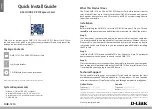
1829XIxb1526_fc c3 Page
26 of 35
Atlas Compliance & Engineering, Inc.
1792 Little Orchard Street
San Jose, CA 95125
Phone 408.971.9743
Fax 408-971-9783
Web www.atlasce.com
measurements, a complete scan of all frequencies and all final measurements are
performed on the open area test site.
Radiated Emission Testing (Electric Field)
During radiated emission testing, the EUT was placed on a nonconductive
rotating table 0.8 meter above the conductive grid. The nonconductive table dimensions
were 1 meter deep by 1.5 meters wide at 0.8 meter high. The EUT is centered laterally on
the tabletop with its rear flush with the rear of the table. Accessories are placed in a
typical configuration on each side of the EUT with a 10cm separation. This configuration
is typical for radiated emission testing of tabletop devices.
For radiated emissions testing, scans in the frequency range of 30 MHz to 1000
MHz were made stepping every 50 kHz. Each frequency was measured using the peak
detector at a bandwidth of 120 kHz for 10 msec. All readings within 10 dB of the limits
were recorded, and those emissions were then measured using the quasi-peak detector at
a bandwidth of 120 kHz for a 2-second measurement time.
For radiated emissions testing from 1000 MHz to 40000 MHz the EUT was
within the 3dB beam width of the measuring antenna. Each frequency was measured
using the peak detector at a bandwidth of 1 MHz. All readings within 8 dB of the limits
were recorded, and those emissions were then measured using the average detector at a
bandwidth of 1 MHz.
During the primary radiated scan, the EUT was powered up and operating in its
defined test mode. The frequency range of 30 MHz to 1000 MHz was then scanned with
the antenna located from 1 to 4 meters above the ground plane in the horizontal and
vertical polarity. The test distance is stated in the report of measurement data. During
these scans, the turntable was rotated and all peaks that were at or near the limits were
recorded. Lastly, scans of the FM band from 88 to 110 MHz and all the strong local
ambient frequencies were made, using a reduced resolution bandwidth. Care was taken to
ensure that no frequencies were missed within the FM and TV bands, an analysis was
performed to determine if the signals that were at or near the limit were caused by an
ambient transmission. If unable to determine by analysis, the equipment was powered
down to make the final determination if the EUT was the source of the emission.
For the final radiated emission measurements any frequency within 8 dB of the
limit was manually made. The turntable was rotated as needed. Comparisons with the
previously recorded measurements were then made. Using the peak readings from both
scans as a guide, the test engineer then maximizes the readings with respect to the table
rotation, antenna height and configuration of the peripherals and cables. The EUT
components and cables were moved in a typical arrangement to produce the maximum
emission. The final emission measurement was taken incorporating the CISPR quasi-
peak detector of the EMI Test Receiver. Figures and photographs showing the final worst
case configuration of the EUT are contained in the test setup page. Test data is contained
in Annex B below.














































